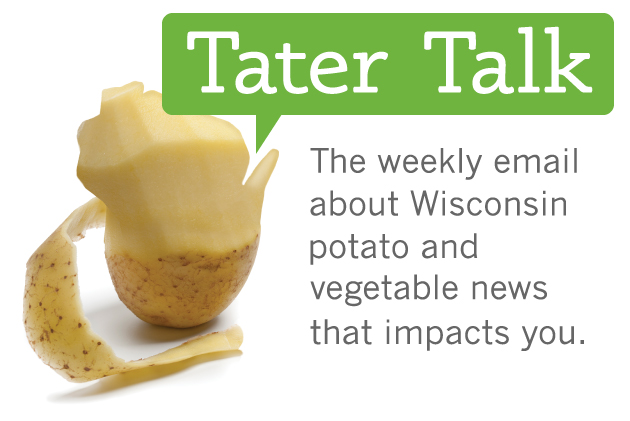The Future of Farming: Game Changers for the Next Generation
Harvest is upon us already in the Central Sands and huge harvesters are filling endless lines of trucks with potatoes, green beans and sweet corn—destined to feed the world. These bountiful harvests are already reflecting the results of technological advances in agriculture that are occurring at alarming speed.
Our present day growers are now out-producing their fathers and grandfathers on the family farm by two- and even four- fold by taking advantage of new technology and exceeding the wildest expectations of growers just a decade ago.
In our day to day lives, computers, smart phones and their apps, new methods of communicating, satellites and even drones are in use in every part of society and are advancing so fast that they now define generations. These technologies are also advancing at the same speed in agriculture and changing the way that we produce food.
It is a widely accepted fact that farmers will need to double their production in the foreseeable future in order to keep pace with feeding the world’s population. How is that even possible?
The answer lies in developing and using new technologies that allow them to improve efficiencies while working to produce more food on less land. Since agriculture has changed so much in the last decade, what can be done in the next decade?
Can we even envision what agriculture will look like for the next generation? The answer is yes, if we open our minds and imagine how some of the new technologies might change the game for the next generations.
Information and how we use it to make better decisions will be key to our success. It’s called “Big Data” now and it’s beginning to drive what we do.
Not long ago, farmers kept track manually of what they did and the better ones used that information to improve what they did on their farms.
Nowadays information (data) is taken on everybody’s farm, on every possible subject and these huge data sets are entered into super computers that can process countless, seemingly unrelated, facts in milliseconds and make predictions or devise solutions in ways that were never imagined possible.
How we get that information is keeping pace with how we use it. The days of walking the field and taking a few notes have already been replaced with highly trained crop scouts who carry smart phones that instantly transmit precise GPS-linked data on crop condition, water status, pests, weather and other essential information to central processing units that can respond immediately by delivering site-specific responses.
Even this state of the art technology will be short lived and is already being supplanted by remote sensing advances. Drones are in the air covering every inch of the crops from hundreds of feet in the air and will be capable of accurately assessing and transmitting anything that could impact productivity.
Then, there are the satellites that already provide continual surveillance of the land surface and can distinguish objects as small as individual plants. Who knows what they will be capable of delivering as more and more non-military uses become available to farmers!
How we manage pests is also evolving rapidly. Wisconsin potato growers led the way in moving from broad spectrum, often toxic pesticides (the sledge hammer) to biologically-based , low-risk products that targeted specific pests (the scalpel).
The future is now moving toward completely biologically-based technology that will use RNA (ribonucleic acid) to specifically turn off enzymes in target pests and silence genes that are essential to the pests’ life processes. This RNAi (ribonucleic acid interference) technology will only take out the pests that are specifically targeted and will have no impact on other organisms (a truly laser approach).
Plant breeding has always played an important part of developing and protecting new and more productive varieties, and it will retain a key role in agriculture’s future, albeit increased to warp speed by new advances in technology.
Beyond traditional plant breeding, we have already seen the rapid expansion of genetic manipulation in developing plant varieties with new traits from other plants (known as genetically modified organisms (GMOs), or having plants with traits that are enhanced and/or silenced to aid in some aspects of the plants growth and production.
We are now at the threshold of a new technology—cis-genetics, where only the genetic material of the host plant is used to create desired characteristics. While many still question the role of this technology, there is little doubt that it will play a role as agriculture faces the challenges of the future.
We are already seeing many of these concepts and others are starting to be used in agriculture. In the next few blog posts, we will describe some of these technologies in greater detail, so be on the lookout for these exciting advances. The future is now, let’s celebrate and encourage adoption of new approaches that can truly change the face of agriculture!


